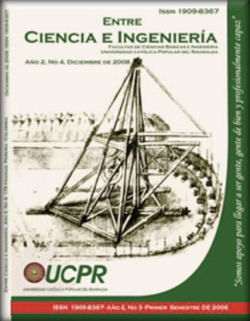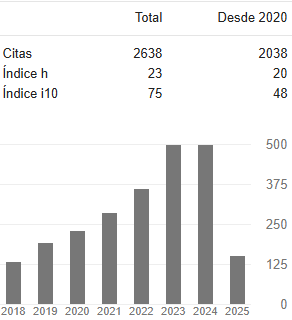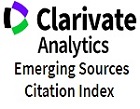Distribución de la estadística de Jarque y Bera para la prueba de normalidad en una serie temporal estacionaria con datos faltantes
DOI:
https://doi.org/10.31908/19098367.792Palabras clave:
Estimación de datos faltantes, la estadística de Jarque y Bera, distribución empírica, bootstrapingResumen
En este artículo se estudia el efecto que produce la estimación de datos faltantes en una serie temporal en la distribución de la estadística de prueba de normalidad (Jarque y Bera, 1980). Tal estudio, se realiza vía simulación y es de carácter exploratorio. Se recomienda en estas circunstancias el uso de la técnica de bootstraping para obtener la distribución empírica de la estadística en mención.
Descargas
Referencias
- Brockwell, P.J. and Davis, R.A. (1991). Time Series: Theory and Methods, 2nd Edition, Springer- Verlag, New York.
- Brockwell, P.J. and Davis, R.A. (1996). Introduction to Time Series and Forecasting, Springer- Verlag, New York.
- Doan, T.A. (2000). RATS Users Manual Version 5, Evanston, USA: Estima.
- Efron, B. (1979). Computers and the theory of statistics: Thinking the unthinkable, SIAM Review, 21(49), 460-480.
- Gómez, V. and Maravall, A. (1996). Programs TRAMO and SEATS, instructions for the user, beta version: september 1996, Working Paper Number 9628, Bank of Spain.
- Harvey, A. (1989). Forecasting, Structural Time Series Models and Kalman Filter, Cambridge University Press, Cambridge.
- Jarque, C.M. and Bera, A.K. (1980). Efficient test for normality, homocedasticity and serial independence of regression residuals, Economics Letters, 6, 255-259.
- Jarque, C.M. and Bera, A.K.(1987). A test for normality of observations and regression residual, International Statistical Review, 55, 163-172.
Descargas
Publicado
Número
Sección
Licencia
Derechos de autor 2019 Entre Ciencia e Ingeniería

Esta obra está bajo una licencia internacional Creative Commons Atribución-NoComercial 4.0.



















